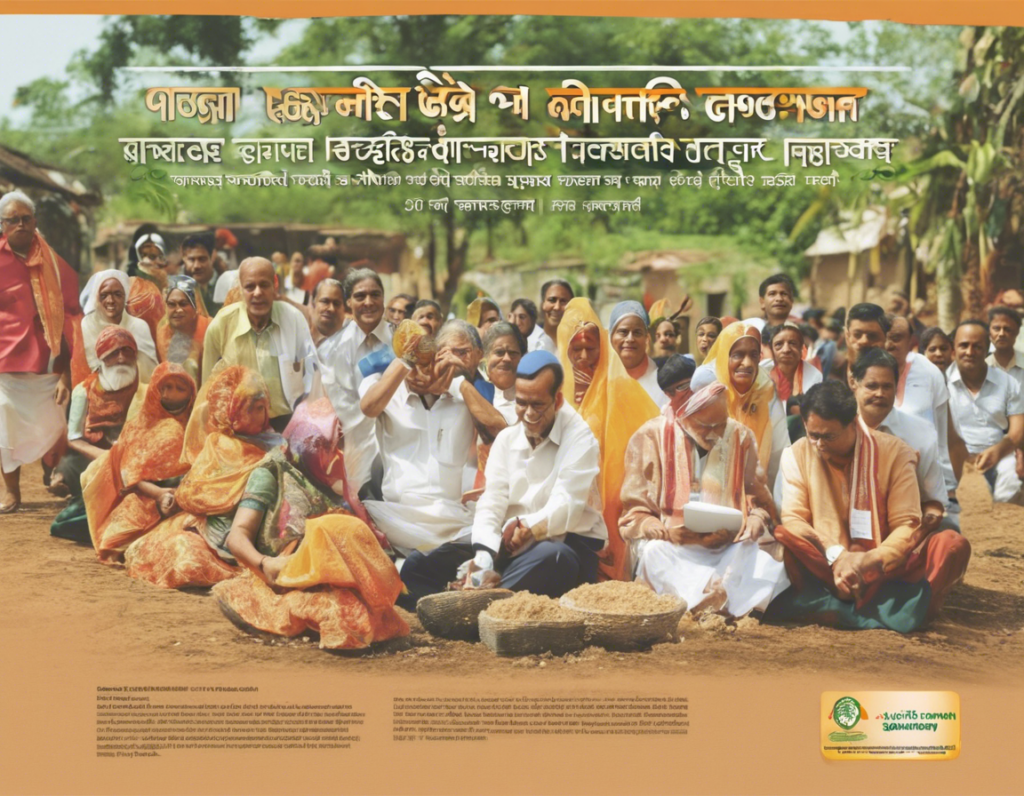
- May 21, 2024
- 3:38 pm
- No Comments
In a country as diverse and vast as India, housing has been a fundamental issue, particularly in rural areas. The Pradhan Mantri Awas Yojana Gramin (PMAY-G), launched in 2016, aims to address this challenge by providing affordable housing for the rural population. This scheme, a flagship program of the Government of India, envisions transforming rural housing by ensuring that every family in need has a safe and secure place to live.
Understanding PM Awas Yojana Gramin
PMAY-G is an ambitious initiative that targets the rural poor, including those living below the poverty line and those belonging to marginalized communities. The primary objective is to provide financial assistance to construct pucca houses with basic amenities to eligible beneficiaries. The scheme also emphasizes the use of environmentally sustainable and disaster-resistant technologies in construction.
Key Components of PMAY-G
-
Housing Support: Financial assistance is provided for the construction of new houses or enhancement of existing ones.
-
Beneficiary Selection: The selection of beneficiaries is done through a transparent process, ensuring that those most in need receive support.
-
Technological Interventions: Emphasis on innovative and sustainable technologies for construction to ensure durability and affordability.
-
Convergence and Monitoring: Coordination with other government schemes for infrastructural support and continuous monitoring of progress.
-
Capacity Building: Training and support for masons and beneficiaries on construction techniques and design aspects.
Progress and Impact of PMAY-G
Since its inception, PMAY-G has made significant strides in transforming rural housing. The scheme has led to the construction of millions of houses across the country, providing shelter to the rural poor. By focusing on inclusivity and sustainability, PMAY-G has not only addressed the housing shortage but also improved the living conditions of many families.
Impact Highlights
-
Increased Accessibility: Remote and marginalized areas have also benefited from the scheme, reducing the urban-rural gap.
-
Empowerment of Women: Women empowerment is a key focus, with many houses being registered in the name of female members of the household.
-
Enhanced Livelihood Opportunities: Improved housing has led to better health outcomes and increased economic activities in rural areas.
Challenges and the Way Forward
While PMAY-G has been successful in its mission, challenges persist in ensuring universal coverage and quality construction. The scheme faces issues like delays in fund disbursement, lack of awareness among beneficiaries, and the need for skill development in the construction sector. To address these challenges, a holistic approach involving stakeholders at all levels is essential.
Strategies for Improvement
-
Enhanced Monitoring Mechanisms: Strengthening monitoring and evaluation processes to track progress and address bottlenecks.
-
Skill Development Programs: Investing in skill development to enhance the quality of construction and promote employment.
-
Community Participation: Involving communities in decision-making processes for sustainable and inclusive development.
-
Innovative Financing Models: Exploring new financing models to ensure the sustainability of the scheme in the long run.
-
Technology Adoption: Leveraging digital tools for efficient implementation and monitoring of the scheme.
Frequently Asked Questions (FAQs)
1. Who is eligible for PMAY-G benefits?
- PMAY-G benefits are extended to individuals from economically weaker sections, low-income groups, and marginalized communities in rural areas.
2. How can one apply for PMAY-G housing assistance?
- Interested individuals can apply through the official PMAY-G portal or visit the nearest Common Service Centre (CSC) for assistance in the application process.
3. What is the subsidy amount provided under PMAY-G?
- The subsidy amount varies based on the category of beneficiary, with higher subsidies for specific groups like senior citizens and differently-abled individuals.
4. Are there any specific guidelines for house construction under PMAY-G?
- Yes, houses constructed under PMAY-G must adhere to specified guidelines in terms of size, quality, and amenities to ensure durability and sustainability.
5. How is the progress of PMAY-G monitored and evaluated?
- The progress of PMAY-G is monitored at various levels, including regular field visits, beneficiary feedback mechanisms, and online tracking systems to ensure transparency and accountability.
In conclusion, the Pradhan Mantri Awas Yojana Gramin plays a crucial role in transforming rural housing in India by providing affordable and sustainable housing solutions to the disadvantaged sections of society. By addressing challenges and embracing innovative approaches, PMAY-G has the potential to create a lasting impact on the lives of millions of rural dwellers, improving their standard of living and fostering inclusive growth.